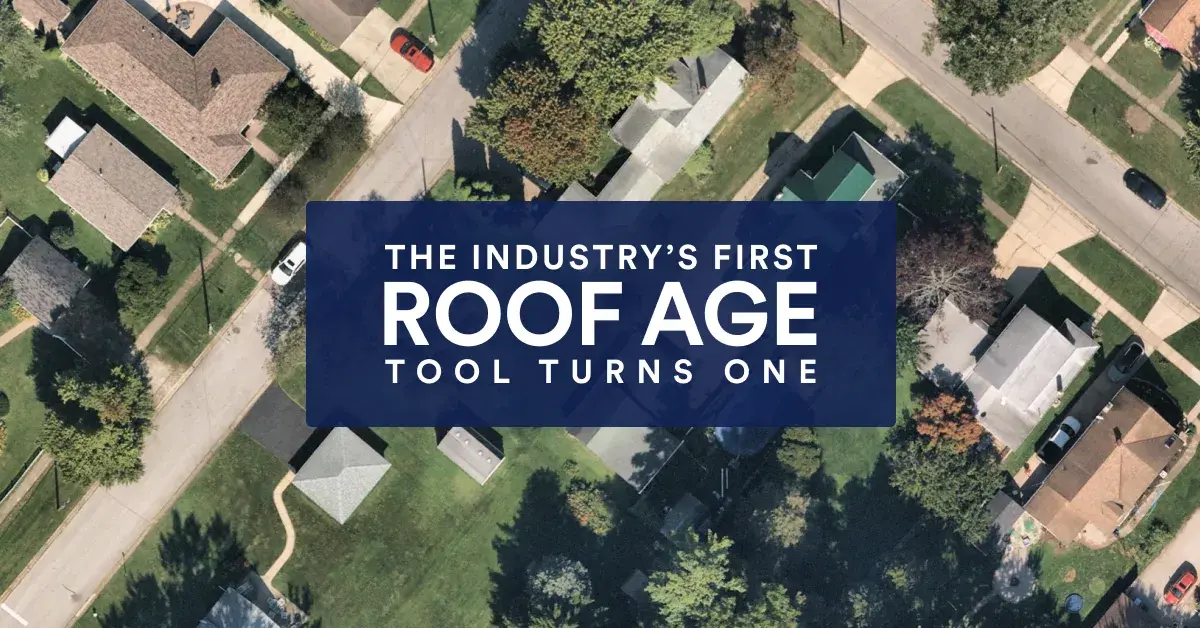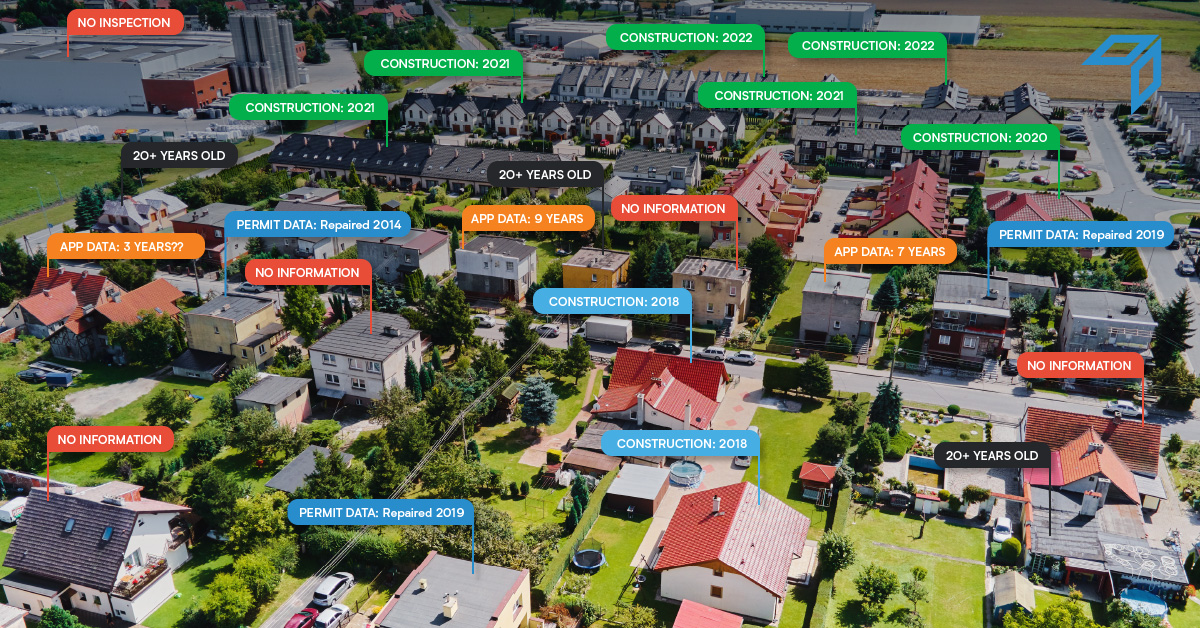Raising the Roof Age Standard in 2024
When Betterview launched the Roof Agesolution in April 2023—the first of its kind—it sparked a new wave of insurtech product innovation and risk...

The age of a roof has emerged as an important subject within the property and casualty (P&C) insurance industry. Due to its vital role in risk assessments and the challenges involved in determining it accurately, roof age is considered the "crown jewel" of P&C insurance data. As an essential indicator of building vulnerability, the age of a roof is an invaluable data point when making policy decisions.
Old Roofs Bring Significant Risk to Insurers
Determining roof age is important because it is closely linked with an array of different risk factors. For example, older roofs are much more prone to structural failures like leaks, damage from hazards like wind and hail, and biological deterioration from mold and mildew. Aged roofs can also be less energy-efficient because they provide less insulation. In extreme cases, they can also be at higher risk of a complete collapse.
Insurers aware of the higher risks associated with aged roofs can make more informed underwriting decisions, accurately price policies, minimize risk, and ensure appropriate claim payouts. For instance, a relatively new roof may result in a lower premium or more comprehensive coverage, while an old and deteriorating roof may prompt the insurer to charge a higher premium or impose coverage restrictions. Accurate roof age data also allows insurers to determine the type of claims payout – Actual Cash Value (ACV) vs. Replacement Cost Value (RCV) and the roof payment schedule, to ensure fair compensation. By utilizing the age of the roof, insurers can avoid premium leakage while protecting the property owner.
Current Roof Age Methods Are Inaccurate
Obtaining accurate roof age data is challenging. When Betterview first attempted to provide roof age data, we relied on traditional methods such as property records, homeowner estimates, and permit data to determine it. However, we found that whenever we cross-referenced these results with high-resolution aerial imagery, the records were often inaccurate. Though it was (mostly) better than nothing, the data was never good enough, no matter where it came from.
We concluded that inaccuracies in records, incomplete or outdated permit data, and incentives for homeowners to underestimate roof age all lead to too many errors for these to be considered reliable data sources. Unfortunately, these traditional methods are still widely used in the industry due to their accessibility and relatively low cost.
A Better Solution: Property Intelligence
Fortunately, Betterview has developed an innovative solution to accurately determine a roof’s age. Our solution leverages cutting-edge technology, including high-resolution aerial imagery and artificial intelligence (AI) to provide insurers with unprecedented accuracy in determining the age of a roof. The key to our solution is the use of historical aerial imagery to feed into our AI, which can pinpoint with precisely when a roof changes. Moreover, our advanced analytics and machine learning algorithms enable continuous monitoring of the roof's condition. This, together with accurate roof age data, keeps insurers up-to-date on the status of the properties they insure.
Betterview's solution is a game-changer for the P&C insurance industry, as it provides unprecedented accuracy in determining roof age. By utilizing advanced technology and a customized approach, Betterview's roof age data enables P&C insurers to make better underwriting decisions, ensure accurate policy pricing, minimize risk, and provide more comprehensive coverage.

When Betterview launched the Roof Agesolution in April 2023—the first of its kind—it sparked a new wave of insurtech product innovation and risk...

For P&C insurers, knowledge is power. The more you know about a property’s current and historical condition, the better equipped you are to make...

The insurance industry, and the technology that supports it, have seen significant change over the last few years. New technology continues to come...